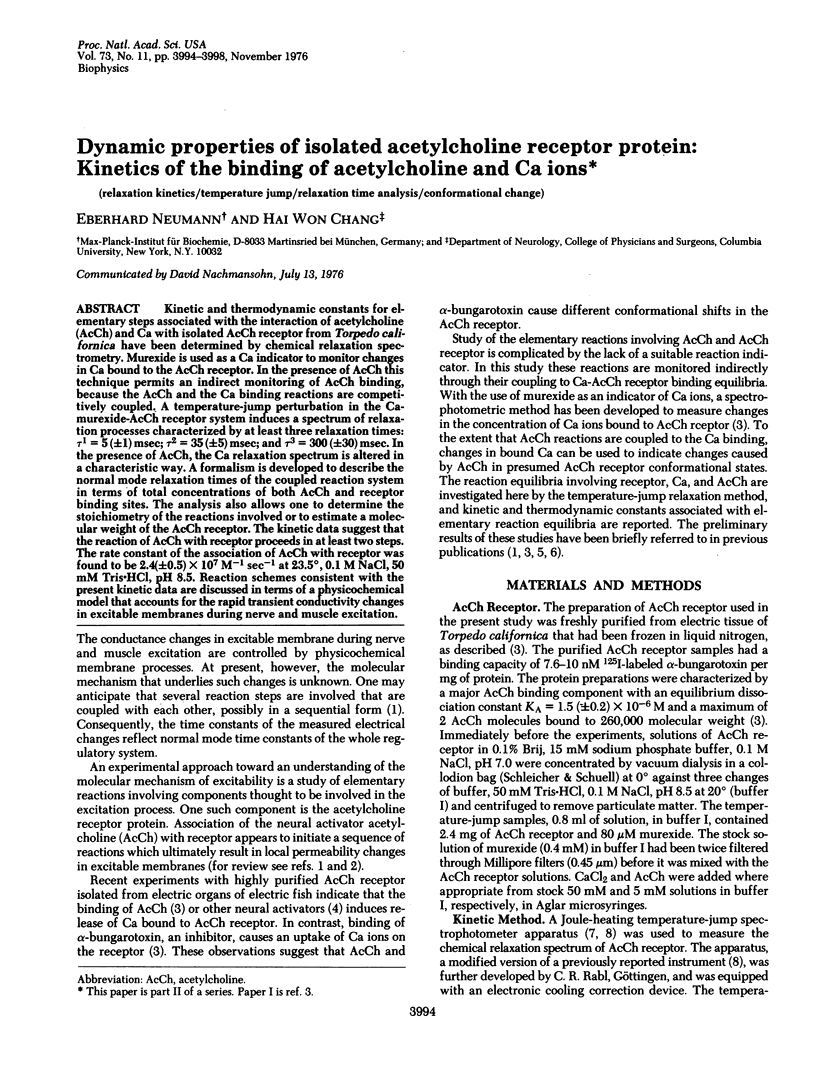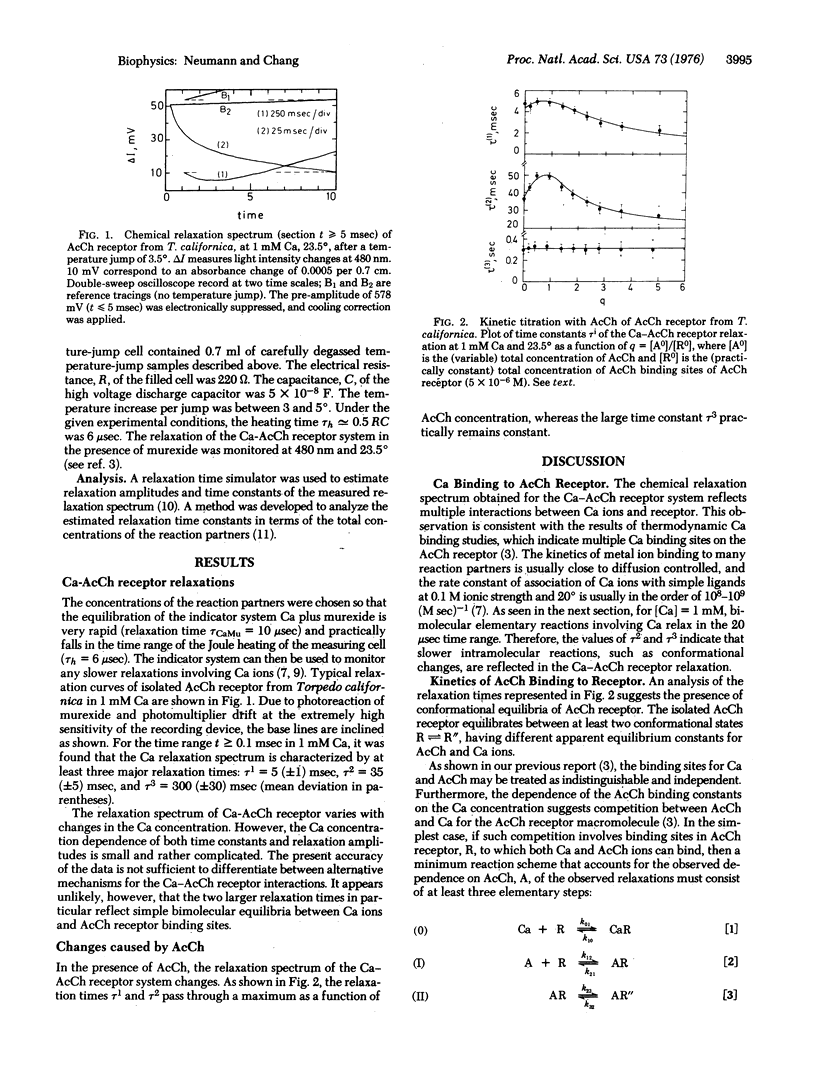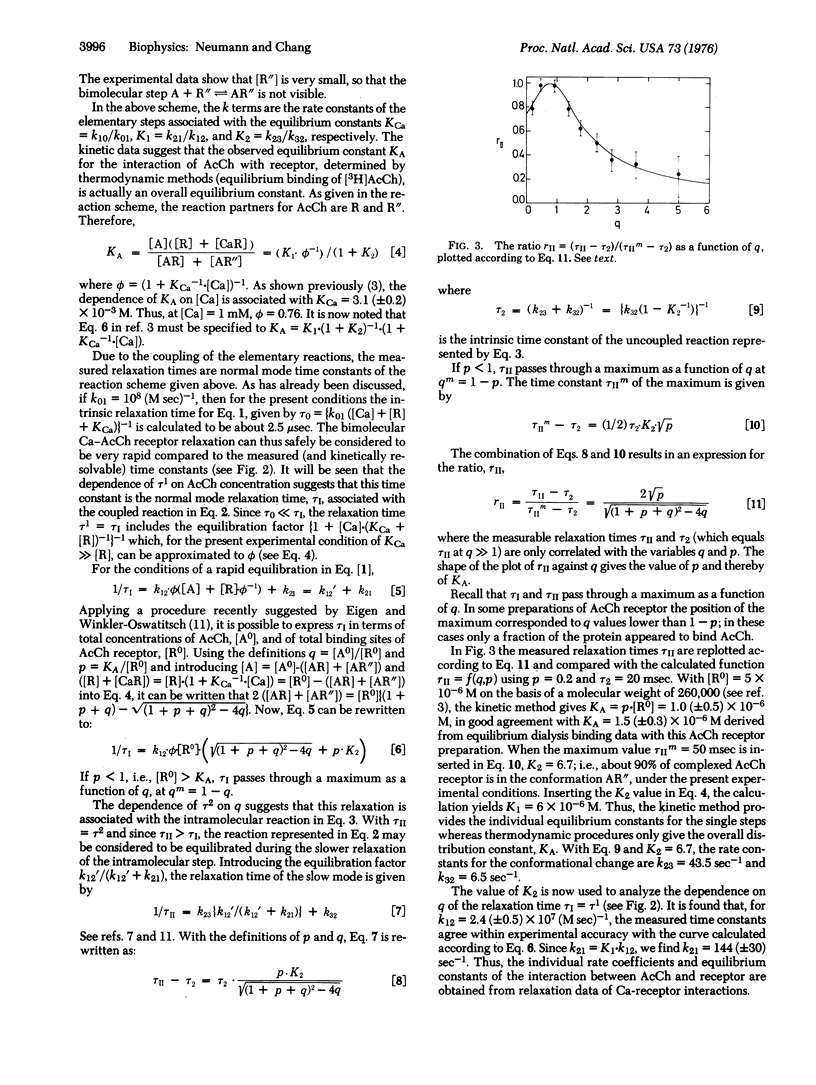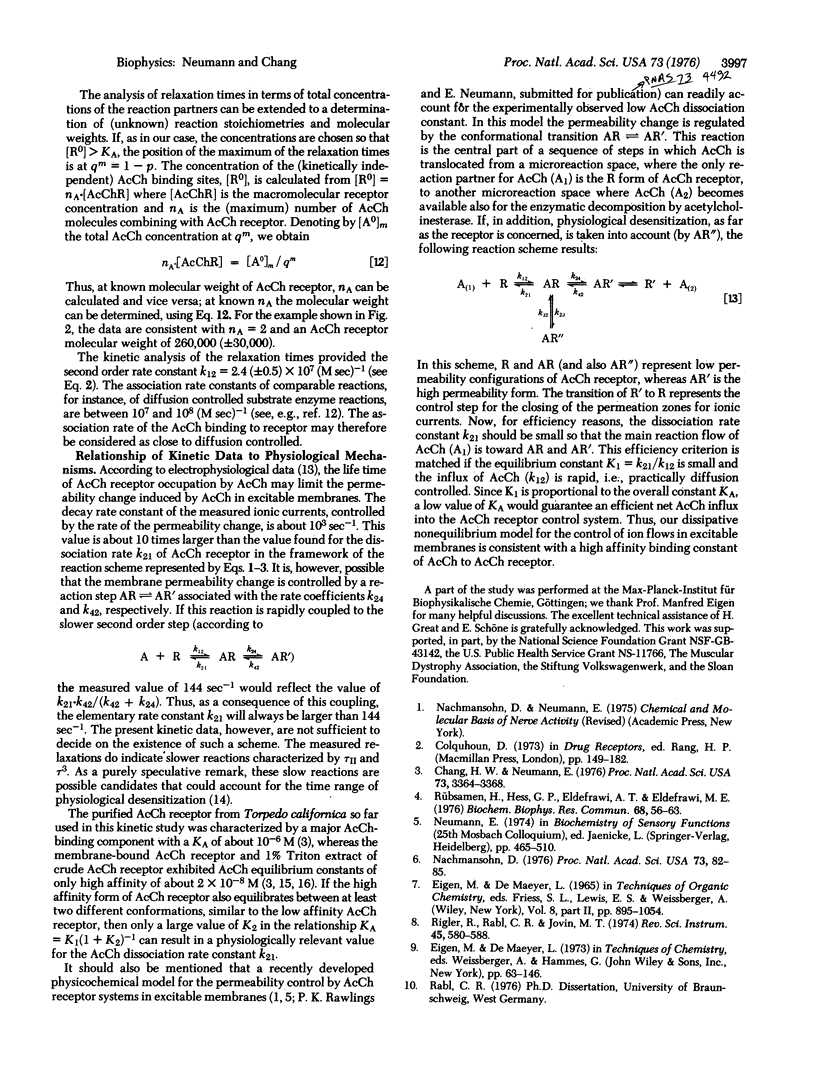Abstract
Kinetic and thermodynamic constants for elementary steps associated with the interaction of acetylcholine (AcCh) and Ca with isolated AcCh receptor from Torpedo californica have been determined by chemical relaxation spectrometry. Murexide as used as a Ca indicator to monitor changes in Ca bound to the AcCh receptor. In the presence of AcCh this technique permits an indirect monitoring of AcCh binding, because the AcCh and the Ca binding reactions are competitively coupled. A temperature-jump perturbation in the Camurexide-AcCh receptor system induces a spectrum of relaxation processes characterized by at least three relaxation times: tau1 = 5 (+/-1) msec; tau2 = 35 (+/-5) msec; and tau3 = 300 (+/-30) msec. In the presence of AcCh, the Ca relaxation spectrum is altered in a characteristic way. A formalism is developed to describe the normal mode relaxation times of the coupled reaction system in terms of total concentrations of both AcCh and receptor binding sites. The analysis also allows one to determine the stoichiometry of the reactions involved or to estimate a molecular weight of the AcCh receptor. The kinetic data suggest that the reaction of AcCh with receptor proceeds in at least two steps. The rate constant of the association of AcCh with receptor was found to be 2.4(+/-0.5) X 10(7) M-1 sec-1 at 23.5 degrees, 0.1 M NaCl, 50 mM Tris-HCl, pH 8.5. Reaction schemes consistent with the present kinetic data are discussed in terms of physiocochemical model that accounts for the rapid transient conductivity changes in excitable membranes during nerve and muscle excitation.
Full text
PDF




Selected References
These references are in PubMed. This may not be the complete list of references from this article.
- Chang H. W., Neumann E. Dynamic properties of isolated acetylcholine receptor proteins: release of calcium ions caused by acetylcholine binding. Proc Natl Acad Sci U S A. 1976 Oct;73(10):3364–3368. doi: 10.1073/pnas.73.10.3364. [DOI] [PMC free article] [PubMed] [Google Scholar]
- Eldefrawi M. E., Eldefrawi A. T., Wilson D. B. Tryptophan and cystein residues of the acetylcholine receptors of Torpedo species. Relationship to binding of cholinergic ligands. Biochemistry. 1975 Sep 23;14(19):4304–4310. doi: 10.1021/bi00690a026. [DOI] [PubMed] [Google Scholar]
- KATZ B., THESLEFF S. A study of the desensitization produced by acetylcholine at the motor end-plate. J Physiol. 1957 Aug 29;138(1):63–80. doi: 10.1113/jphysiol.1957.sp005838. [DOI] [PMC free article] [PubMed] [Google Scholar]
- Magleby K. L., Stevens C. F. A quantitative description of end-plate currents. J Physiol. 1972 May;223(1):173–197. doi: 10.1113/jphysiol.1972.sp009840. [DOI] [PMC free article] [PubMed] [Google Scholar]
- Nachmansohn D. Transduction of chemical into electrical energy. Proc Natl Acad Sci U S A. 1976 Jan;73(1):82–85. doi: 10.1073/pnas.73.1.82. [DOI] [PMC free article] [PubMed] [Google Scholar]
- O'Brien R. D., Gibson R. E. Conversion of high affinity acetylcholine receptor from Torpedo californica electroplax to an altered form. Arch Biochem Biophys. 1975 Aug;169(2):458–463. doi: 10.1016/0003-9861(75)90188-5. [DOI] [PubMed] [Google Scholar]
- Rübsamen H., Hess G. P., Eldefrawi A. T., Eldefrawi M. E. Interaction between calcium and ligand-binding sites of the purified acetylcholine receptor studied by use of a fluorescent lanthanide. Biochem Biophys Res Commun. 1976 Jan 12;68(1):56–63. doi: 10.1016/0006-291x(76)90009-7. [DOI] [PubMed] [Google Scholar]


